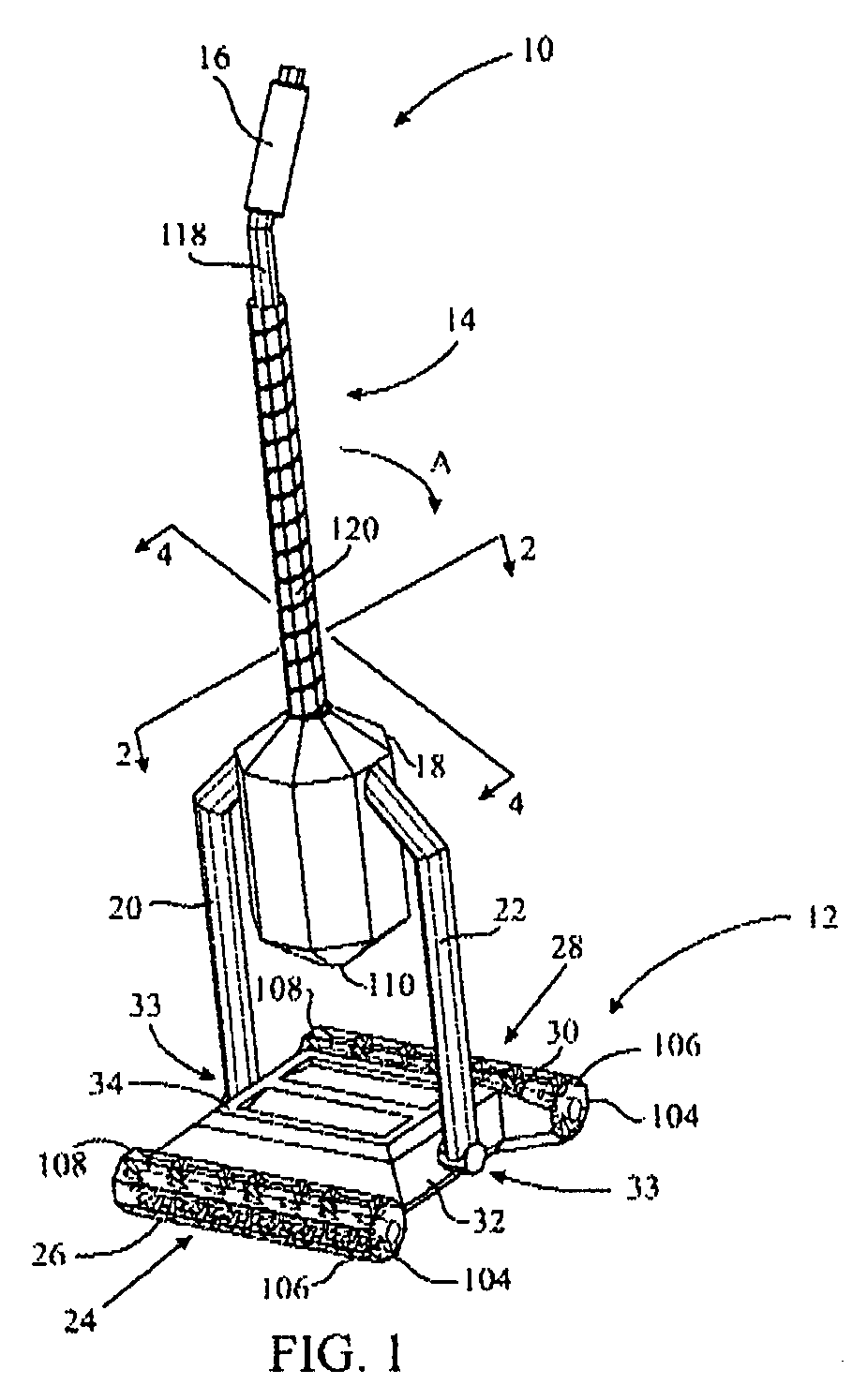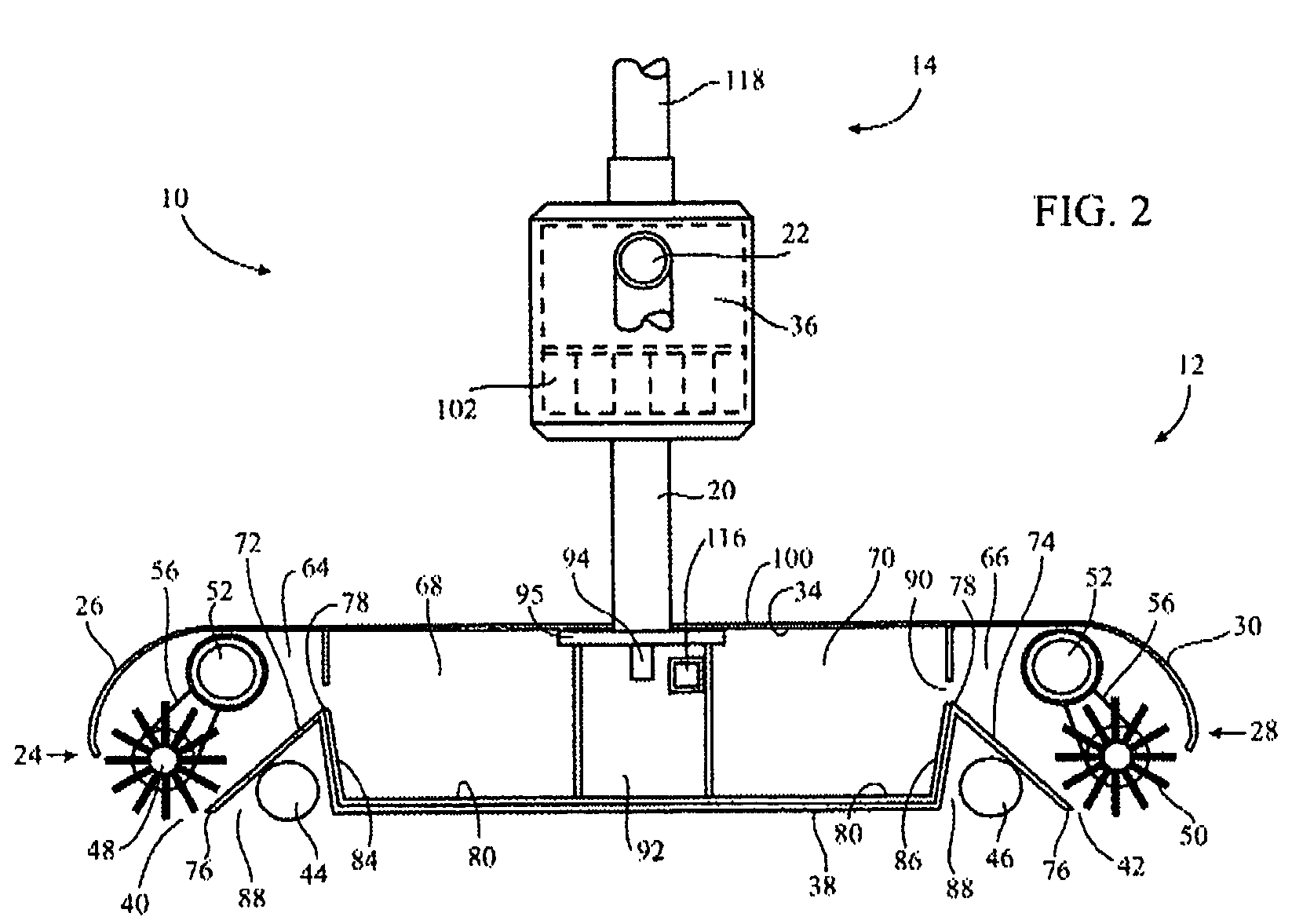Dirt container for a surface cleaning apparatus and method of use
a technology for cleaning apparatuses and dirt containers, which is applied in the direction of auxillary pretreatment, cleaning filter means, and separation processes, etc. it can solve the problems of reducing the cleaning efficiency of the vacuum cleaner, reducing the amount of particulate matter that may be expelled, and reducing the amount of particulate matter that can be handled by the user. , the effect of reducing the amount of particulate matter in the dirt container
- Summary
- Abstract
- Description
- Claims
- Application Information
AI Technical Summary
Benefits of technology
Problems solved by technology
Method used
Image
Examples
Embodiment Construction
[0088]The dirt container of the instant invention may be used with an upright vacuum cleaner, a canister vacuum cleaner, a stick vacuum cleaner, a central vacuum cleaner, a sweeper, a carpet extractor or other surface cleaning apparatus of any configuration. For example, in FIGS. 1-15, a dirt container is exemplified as it may be used with a vacuum cleaner having a motor affixed to the handle of the vacuum cleaner. In FIGS. 16, 17A, 17B, 19, 19A, 19B and 20, an alternate dirt container is exemplified in a vacuum cleaner having all of the working components in the surface cleaning head. In FIG. 18, a surface cleaning apparatus incorporating two alternate dirt containers is exemplified. The following description of these preferred embodiments exemplify that the dirt container may be of various sizes and shapes and may include a variety of air cleaning members.
[0089]As shown in FIG. 1, vacuum cleaner 10 may comprise surface cleaning head 12 and motor and handle assembly 14. Motor and h...
PUM
| Property | Measurement | Unit |
|---|---|---|
| thickness | aaaaa | aaaaa |
| thickness | aaaaa | aaaaa |
| diameter | aaaaa | aaaaa |
Abstract
Description
Claims
Application Information
 Login to View More
Login to View More - R&D
- Intellectual Property
- Life Sciences
- Materials
- Tech Scout
- Unparalleled Data Quality
- Higher Quality Content
- 60% Fewer Hallucinations
Browse by: Latest US Patents, China's latest patents, Technical Efficacy Thesaurus, Application Domain, Technology Topic, Popular Technical Reports.
© 2025 PatSnap. All rights reserved.Legal|Privacy policy|Modern Slavery Act Transparency Statement|Sitemap|About US| Contact US: help@patsnap.com



